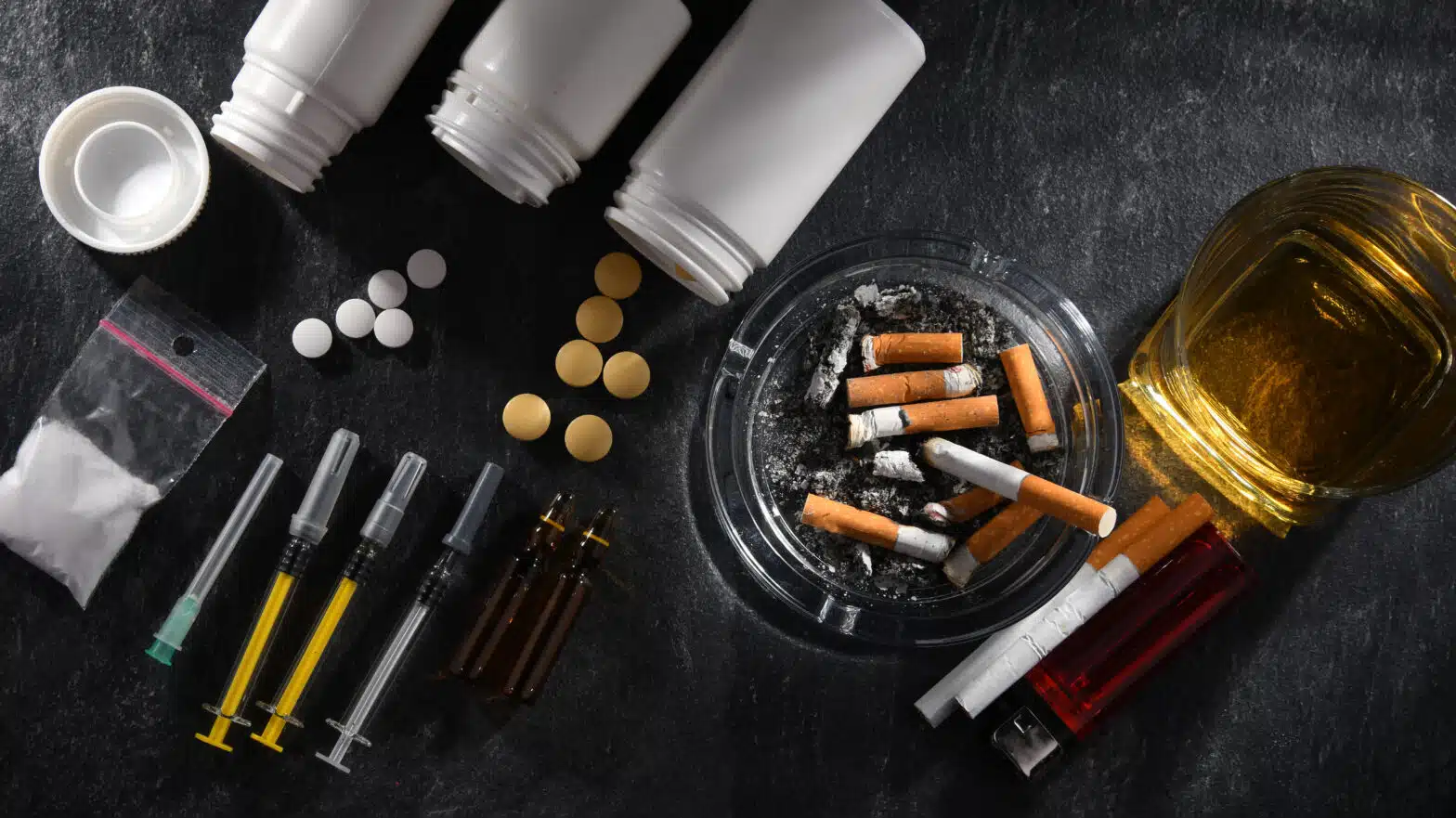
The development of drug addiction is complex and influenced by a combination of biological, environmental, and psychological factors.
Understanding these factors is important for developing comprehensive prevention, intervention, and treatment strategies to address drug addiction.
Defining Addiction
Addiction is a chronic condition characterized by the compulsive seeking, use, and inability to control the use of substances.
People with addiction often experience a strong compulsion to engage in addictive behaviors or use substances, even when they are aware of the negative consequences.
Intense and persistent cravings for the substance or behavior are common in addiction, contributing to the difficulty of quitting.
Addiction is considered a brain disorder because it involves changes in the structure and function of the brain’s reward and decision-making circuits.
Many people with addiction exhibit denial about the severity of the problem or its impact on their lives.
Biological Factors
Biological factors play a role in a person’s vulnerability to addiction.
Certain genes may influence how the brain responds to drugs, how efficiently drugs are metabolized, and the likelihood of developing dependence.
People with heightened sensitivity or reduced sensitivity to the effects of certain substances may also be more likely to develop addiction.
Furthermore, the brain chemistry of all people can contribute to addiction through drugs that hijack the brain’s reward system, which focuses on neurotransmitters such as dopamine.
Addictive drugs, like opioids, can lead to an exaggerated release of dopamine, creating a reinforcing effect that motivates continued drug use.
Environmental Factors
Environmental factors refer to all aspects of a person’s surroundings and experiences, and they can impact the development and progression of drug addiction.
Easy access to substances, along with peer pressure to use drugs from friends and social circles, increases the risk of experimentation and subsequent addiction.
Similarly, a person’s family environment can affect addiction risk, and factors like parental substance abuse, family history of addiction, and childhood trauma can increase susceptibility.
In addition to social influences, climate also has an influence on addiction. Areas with extreme winters often experience higher rates of substance abuse, particularly during the winter months.
Long periods of cold weather, reduced sunlight, and limited outdoor activities can lead to boredom, isolation, and seasonal affective disorder, a type of depression that can increase drug and alcohol use.
Psychological Factors
People facing mental health challenges such as anxiety, depression, or unresolved emotional trauma may be more susceptible to substance abuse as a means of self-medication.
The desire for escape from distressing emotions coupled with a lack of effective coping mechanisms can lead to the initiation and continuation of drug use.
Additionally, personality traits like impulsivity, sensation-seeking, and a tendency towards risk-taking may contribute to a higher risk of developing addictive behaviors.
The impact of stress, whether chronic or acute, can also trigger drug use as a way to alleviate or manage the perceived pressures.
Socioeconomic Conditions
People facing economic challenges, limited educational opportunities, or those living in impoverished environments may encounter higher stress levels and reduced access to resources.
These struggles can contribute to feelings of hopelessness and despair, prompting some people to turn to substances as a way to cope or escape their circumstances.
However, it’s a misconception that drug addiction only affects economically disadvantaged areas.
High-income communities also experience addiction issues related to factors such as stress, pressure, and access to prescription medications.
The notion that substance abuse is limited to economically disadvantaged areas perpetuates stigma and can hinder prevention and intervention efforts.
Cultural Influences
Cultural norms, beliefs, and societal attitudes toward substance use help shape patterns of drug addiction within a community.
Pop culture in particular can play a dual role in influencing drug addiction, both reflecting and shaping societal attitudes and behaviors.
Media, music, and celebrity lifestyles often portray substance use in ways that can glamorize or normalize it, contributing to a culture where drug use is perceived as acceptable.
Societal acceptance or stigmatization of substance use, such as drinking or doing drugs in social settings, may also influence a person’s likelihood to use drugs.
It should be noted that cultural factors extend to the availability of treatment resources, with some communities having greater access to relevant interventions than others.
Developmental Factors
Teenagers and young adults who engage in drug use are more likely to develop addiction later in life.
This is because the adolescent brain is still in the process of maturing, and exposure to drugs during this period can have long-lasting effects.
Experimentation with substances during the teenage years can lead to alterations in brain structure, particularly in areas related to decision-making, impulse control, and reward processing.
This early drug use may set the stage for a pattern of substance abuse, increasing the likelihood of developing addictive behaviors as people transition into adulthood.
The earlier the initiation of drug use, the greater the risk that person has of developing a substance use disorder.
Learn How To Get Addiction Treatment Today
If you or a loved one is experiencing addiction, treatment is available. Contact our recovery center today.
- Mayo Clinic https://www.mayoclinic.org/diseases-conditions/drug-addiction/symptoms-causes/syc-20365112#:~:text=Difficult%20family%20situations%20or%20lack,of%20progressing%20to%20drug%20addiction
- National Library of Medicine: Medline Plus https://medlineplus.gov/ency/article/001522.htm#:~:text=A%20person's%20genes%2C%20the%20action,disorder%2C%20or%20another%20mental%20problem
- National Institute on Drug Abuse (NIDA) https://nida.nih.gov/publications/drugs-brains-behavior-science-addiction/drug-misuse-addiction#:~:text=Biological%20factors%20that%20can%20affect,and%20even%20gender%20or%20ethnicity
- National Library of Medicine: PubMed https://www.ncbi.nlm.nih.gov/pmc/articles/PMC3935152/
- National Library of Medicine: PubMed https://www.ncbi.nlm.nih.gov/pmc/articles/PMC4924064/
- National Library of Medicine: PubMed https://www.ncbi.nlm.nih.gov/pmc/articles/PMC3959021/
- National Library of Medicine: PubMed https://www.ncbi.nlm.nih.gov/pmc/articles/PMC3410945/
- National Library of Medicine: PubMed https://www.ncbi.nlm.nih.gov/pmc/articles/PMC3905480/
- National Library of Medicine: PubMed https://www.ncbi.nlm.nih.gov/pmc/articles/PMC4008086/
- National Library of Medicine: PubMed https://www.ncbi.nlm.nih.gov/pmc/articles/PMC4628052/
